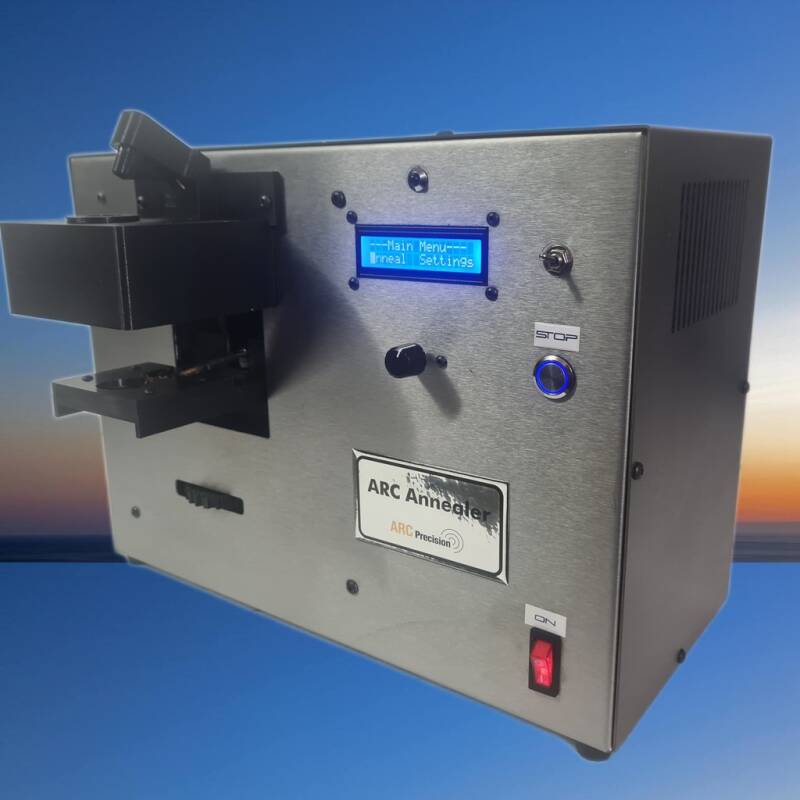Reloading
Arc Annealer
Principles of operation
The ARC annealers all use the same principle of operation. We will cover some elements for your convenience.
Height Setting
It is our believe from experience, that due to indifferences between cases, not all cases should be annealed by applying heat at the same position. Case thickness varies and the heat spread is different between brands and calibers. In some instances it is needed to apply heat below the neck to allow spread from the bottom up whilst in other cases applying heat at the neck allows decent spread to the shoulders. We also refer to thickness gradient and Thermal centre. The thermal centre is where one should apply heat to allow an even spread below and above this point. “Boxing” annealing with some template for all cases would defeat the objective in finding the ultimate position and perfect anneal. For that reason we do not support the idea of supplying some “calibrated fixture” or a settings table for standard height settings.
Glow Sensor
ARC annealers provide for time based annealing and Glow based Annealing. The Glow sensor is a light sensitive device that is backed by a protected algorithm, The Glow sensor will wait for the specific colour variance and stop the process. This is similar to IR Thermal devices or thermometers.
Time Based Annealing
Here we provide for a process by which a time it set and the case annealed for the said time. If you are used to Time Based Annealing then this is available as a standard function.
Pulse Mode Annealing
This mode is not available to the Alpha Models. Some cases do have a steep thickness gradient and the difference in neck thickness to that of the case can be drastic. Hence the case is positioned higher, indicating a lower Thermal Centre. Heat is pulse and spreading from the bottom to the thinner neck region while heat is pulsed. This takes longer but the user will quickly sense the need and difference between normal anneal and Pulse anneal and which cases required Pulse Anneal.
Pre-Heating
As the annealed time is displayed, once will sense that some cases takes longer or shorter than others. This can become a useful comparison tool to the reloader. But when the ambient temperature differs from winter to summer or one day to the next, it will take longer to heat a colder brass case than warmer one, held in your hand or so. To achieve consistency once again, the brass case is pre-heated to just under glow temperature from which point the annealing starts and is measured with respect to time taken.
Auto Mode
We placed sensors at the bottom, each side, of the Top. The top is the fixed “house” above the bed. One should ne able so see them or feel them. When this optical path is clear, the Annealer knows the bed is empty and visa versa.
When in Auto mode (which is the default mode for Alpha Series), the anneal process is initialized by the obstruction of the light path. Care must be taken in managing this sensing technique by not allow blocking with no case loaded, it will damage you annealer. Also see the Foot section for more relevant information.
Induction Heating
ARC spent huge effort to maximize the induction process. The conclusion included a custom made core, easing energy usage while balancing the time taken to anneal. The custom core also reduce heat build up and giving users more than enough time to process large batches.
Some of the above information is also shared in the user manuals of each Annealer.
Van Zyl




